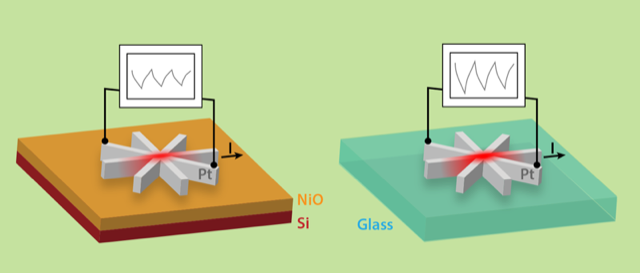Barry Zink
Physics 12, 134 (2019)
Absence of Evidence of Electrical Switching of the Antiferromagnetic Néel Vector
C. C. Chiang, S. Y. Huang, D. Qu, P. H. Wu, and C. L. Chien
Phys. Rev. Lett. 123, 227203 (2019)
Schematics of the eight-terminal patterned structure with the pulsed writing current along the 45° (write 1) and the 135° (write 2) lines for (a) planar Hall and (b) longitudinal resistance measurements. Relative changes of Hall resistance in (c) Pt/NiO/Si and (e) Pt/NiO/glass and relative change of longitudinal resistance in (d) Pt/NiO/Si and (f) Pt/NiO/glass, after applying 10-ms writing current pulses alternately along the 45° and the 135° lines.
|
 |
| (Left) Platinum (Pt) strips grown on antiferromagnetic nickel oxide (NiO) films convert charge current to spin current, which is intended to switch the pointing direction of the insulating NiO’s spins. The switching is observed via a sawtooth voltage pattern. However, the Pt heats dramatically when the current is applied and (right) this heating reproduces the sawtooth pattern even when no antiferromagnet is present. |